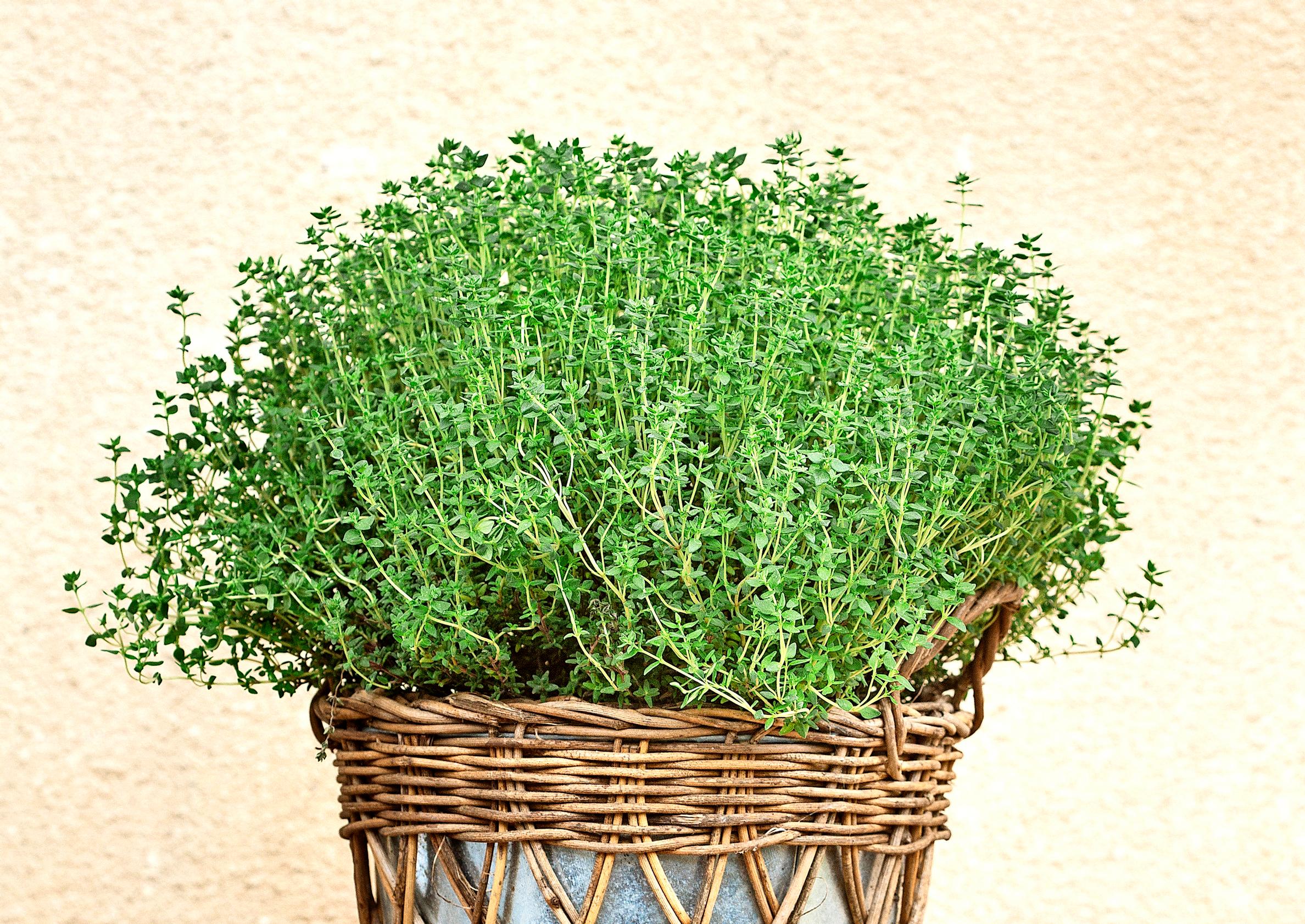
Growing thyme—get our best tips on caring for this Mediterranean herb
Thyme is a flavorful herb with woody stems from the Mediterranean region. Plant it in a warm, sunny spot to help it thrive.
Thyme (Thymus vulgaris) thrives in long, dry, hot summers and mild, damp winters. Many Mediterranean herbs naturally grow on rugged slopes in well-draining, lime-rich soil. Picking the right spot for growing thyme is important to help the plant thrive.
Growing thyme: how to succeed
Growing site
Choose a sunny location. The soil should be limed, moderately fertile, sandy, and well-draining. You can grow thyme on a windowsill, in a greenhouse, outdoors, in a raised bed, or in a rock garden.
Planting
Plant thyme in a sunny spot. It needs plenty of light and warmth for strong growth and overwintering. Its roots do best in an airy, well-draining growing medium.
A raised bed works well, as long as the plant is placed in the middle of a wide bed. If it’s too close to the edge, frost may reach the roots during winters with little snow.
Thyme seed propagation
Sow a few seeds in one pot without covering them. Start the seeds 5–8 weeks before planting outdoors.
Other propagation methods
Want to grow even more thyme? You can also propagate thyme by dividing established plants, layering, or taking cuttings.
Fertilizing
Fertilizing thyme is important because a nutrient-deficient plant is more susceptible to frost damage. Apply a nitrogen fertilizer in the spring when growth begins.
Overwintering thyme
Overwintering can be unreliable even in favorable conditions, especially during snowless winters. Protect the easily drying foliage from frost and spring sun by covering it with something, such as conifer branches. You can also overwinter thyme successfully in a cool, bright indoor spot.
Harvesting thyme
Use scissors or a sharp knife to cut the shoot tips. If you plan to overwinter the plant, stop trimming in August.
Other species
There are several thyme species you can grow. Lemon thyme is a popular variety with better winter hardiness than common thyme. It has been bred into numerous cultivars that differ in flavor and leaf color. However, many of these cultivars tend to be less winter-hardy than common sage. Many cultivars can only be propagated vegetatively.


